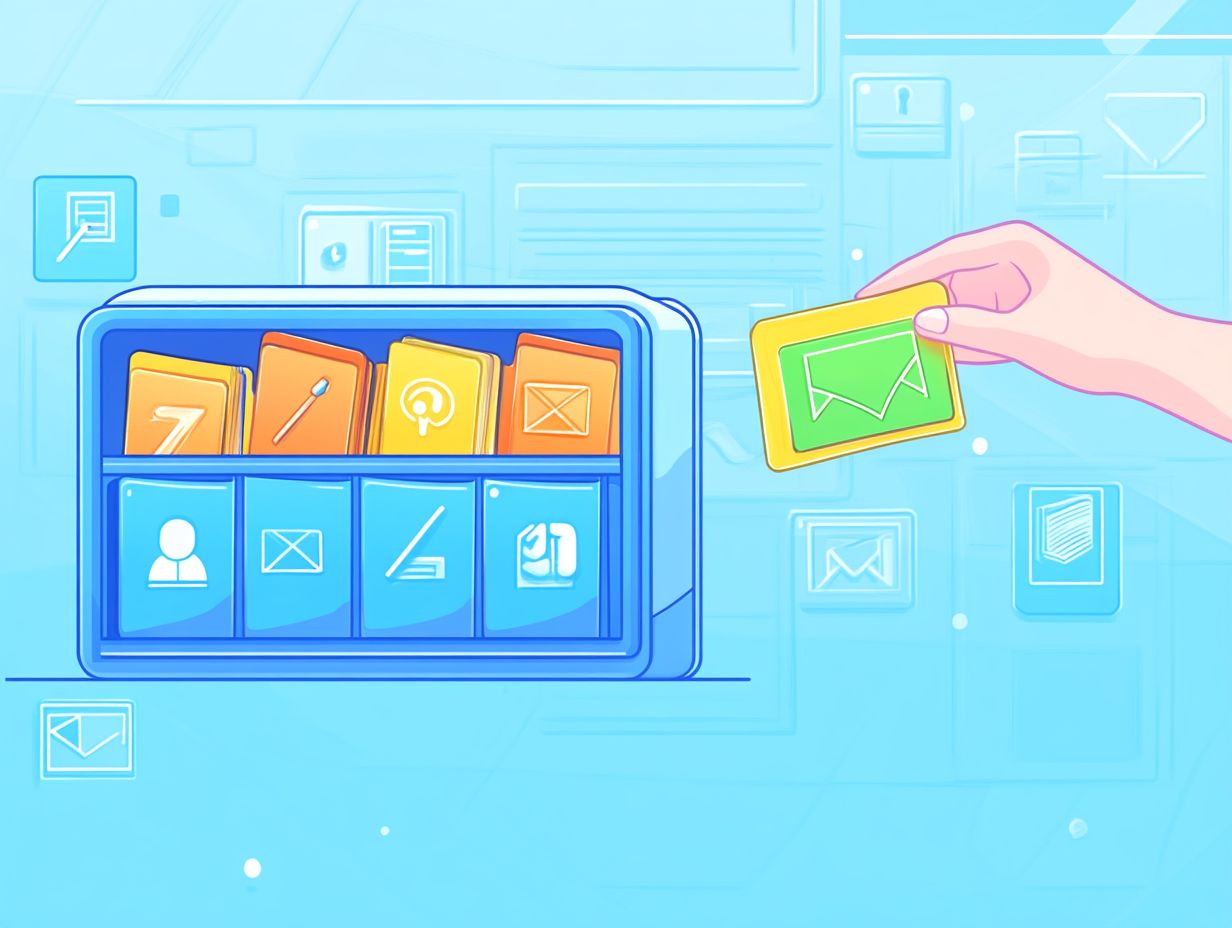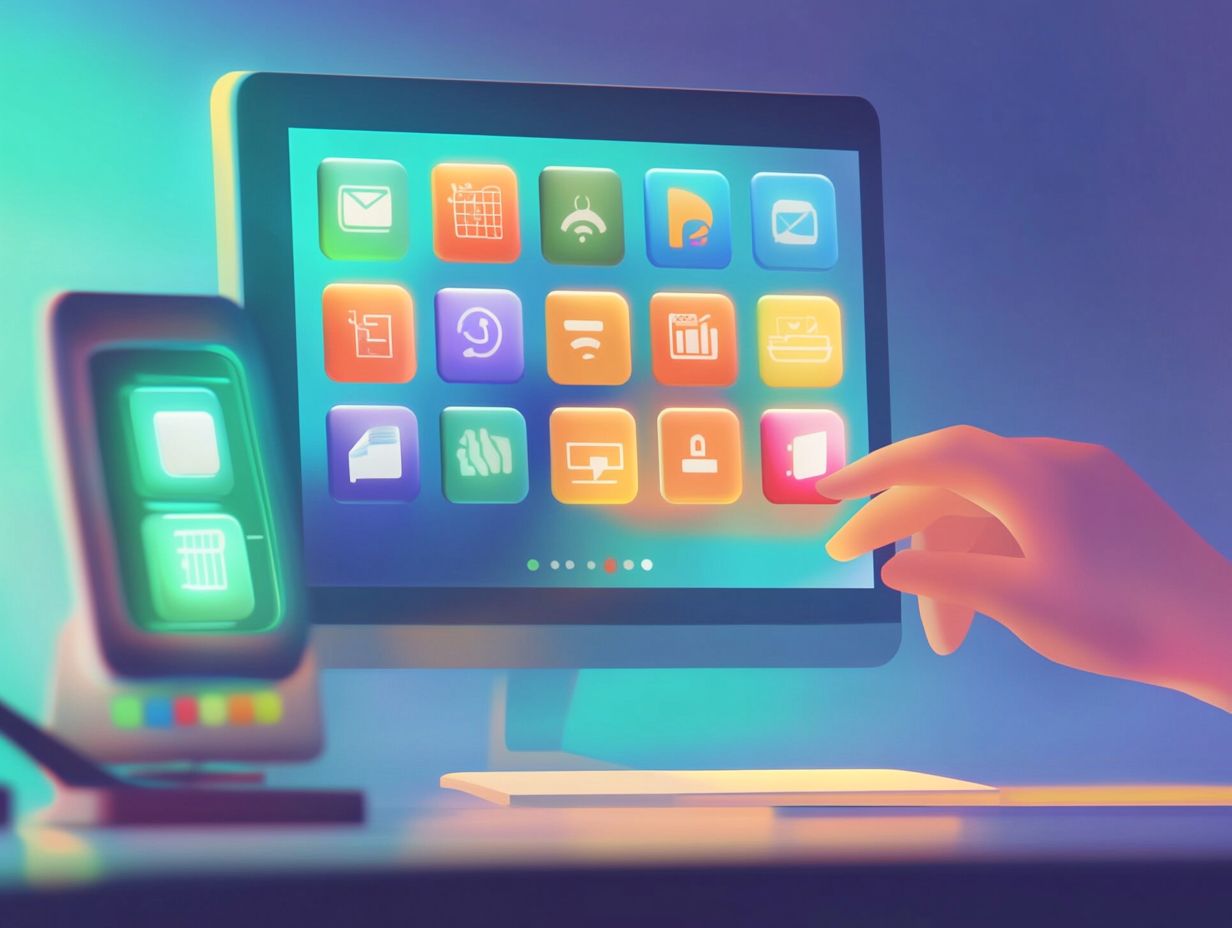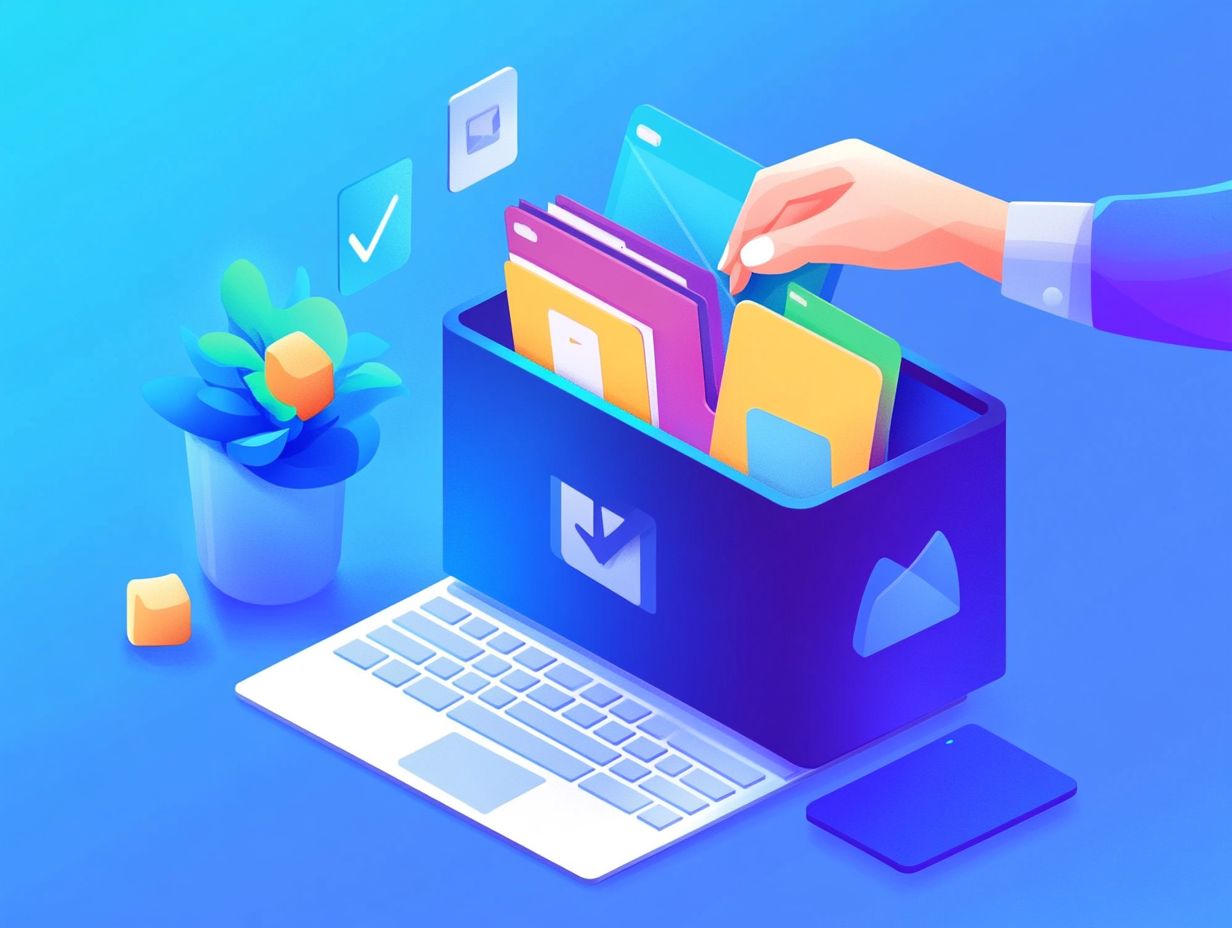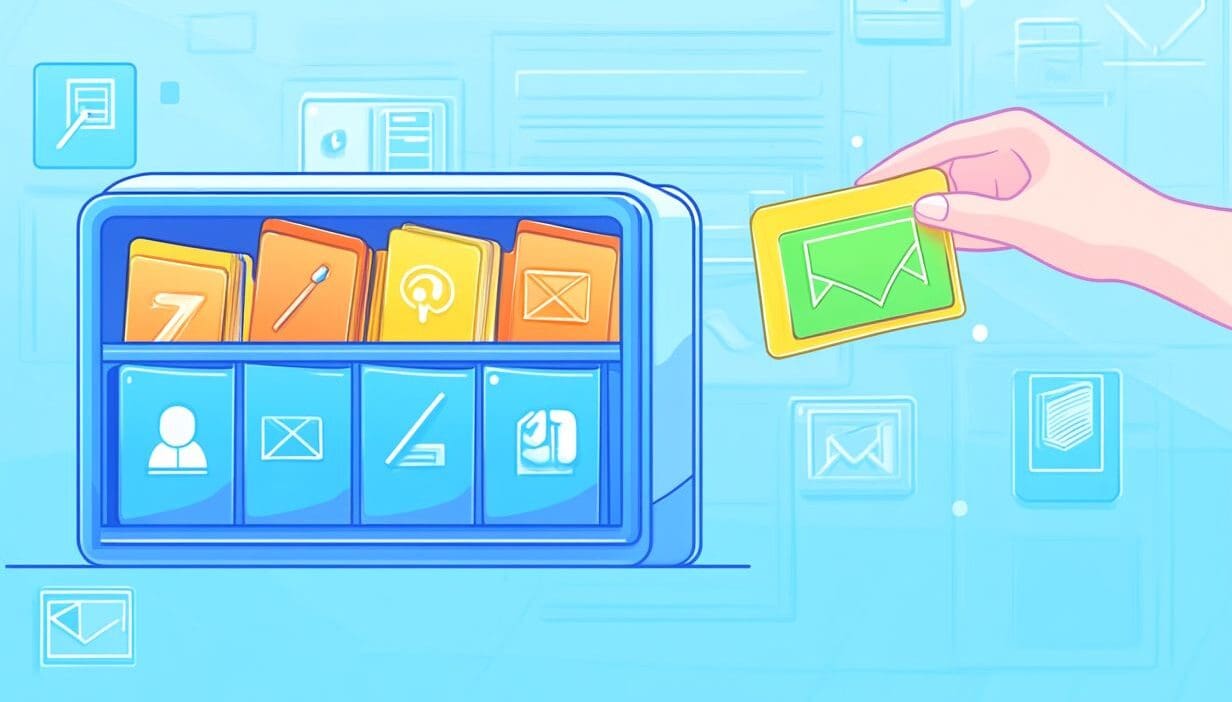In today’s fast-paced digital landscape, a cluttered desktop full of digital clutter can be overwhelming, impeding productivity and obscuring mental clarity. It is essential to extend the same level of attention to our digital environments as we do to our physical spaces, with decluttering serving as the initial step toward achieving a more organized and efficient workflow. This article examines the significance of maintaining a tidy digital desktop and provides practical strategies for organizing files, eliminating unnecessary clutter like a cluttered inbox, and implementing tools for ongoing maintenance, including digital tools. Readers will gain insight into how a streamlined digital environment, aided by creative technology, can enhance productivity and foster improved mental clarity.
Key Takeaways:
Why Decluttering Your Digital Desktop is Important

Decluttering your digital desktop is crucial for both personal and professional digital environments, which can be achieved using a digital declutter checklist. A clean and organized digital workspace can lead to substantial improvements in productivity, stress reduction, and overall mental clarity. According to research from Verywell Mind, maintaining a clean and organized space can significantly impact mental health by reducing anxiety and increasing focus.
When the desktop is devoid of digital clutter, individuals are better positioned to concentrate on the tasks that hold the greatest significance, thereby fostering a healthier mindset in managing their digital lives.
By adopting an effective organizational system, one can create a space that supports digital minimalism efforts, facilitating the streamlining of tasks and contributing to a more serene working atmosphere.
The Impact of a Cluttered Desktop
A cluttered desktop can significantly impede productivity and create a sense of overwhelm, similar to a disorganized inbox that is challenging to manage effectively.
The sheer volume of icons, files, and notifications can serve as distractions that disrupt focus and hinder the flow of work. When attempting to navigate through a sea of digital clutter, valuable time is often wasted searching for essential documents or addressing constant notifications that interrupt concentration.
This situation frequently leads to increased stress levels, as the mind struggles to cope with chaos rather than concentrating on the tasks at hand, highlighting the need for clear clutter strategies. Utilizing tools such as digital decluttering applications, like ‘CCleaner,’ or adopting methodologies such as the ‘Marie Kondo’ approach can be instrumental in organizing digital environments.
An insightful article from the American Psychological Association elaborates on why clutter, including digital disarray, can lead to stress, illustrating the importance of prioritizing essential files and implementing routine maintenance strategies.
By prioritizing essential files and implementing routine maintenance strategies, individuals can cultivate a more serene workspace that enhances time management and reduces anxiety, including techniques like browser maintenance.
Steps to Declutter Your Digital Desktop

To effectively declutter a digital desktop, it is essential to adopt a systematic approach.
This includes utilizing a digital declutter checklist, managing documents with precision, and implementing consistent digital habits and app organization to sustain a clear and organized workspace over time.
Organizing Files and Folders
Organizing files and folders is an essential component of the decluttering process, as it establishes an intuitive system involving file management that enhances the efficiency of information retrieval and minimizes the frustration typically associated with disorganized digital storage.
To optimize this organizational system, implementing effective file naming conventions can significantly improve overall organization, allowing for quick identification of files without the necessity of opening each one. This practice involves using descriptive titles that clearly indicate the content and date, thereby facilitating swift access to required information.
Employing cloud storage solutions such as Google Drive, Dropbox, and OneDrive can greatly enhance accessibility, enabling users to access files from any device and collaborate effortlessly with others. According to Business.com, utilizing these tools also improves productivity by allowing seamless file sharing and real-time collaboration.
Additionally, utilizing external hard drives as a reliable backup method allows for the effective archiving of important documents and emails, ensuring that critical information is protected against potential data loss.
Deleting Unnecessary Files

Deleting unnecessary files and deleting duplicate files is vital for effective digital organization, as it not only eliminates clutter but also enhances productivity by minimizing the time spent searching for relevant documents.
This process is crucial for maintaining the overall order of digital spaces, ensuring that critical files are readily accessible. Regularly reviewing and removing outdated documents or duplicate files can significantly streamline workflows, reduce stress while working on projects, and offer time saving benefits.
Furthermore, proper photo management using tools like Lightroom is increasingly important, as a well-organized photo library not only conserves valuable memory space but also preserves cherished memories. Before initiating any deletions, it is imperative to back up important documents and secure passwords to ensure that no vital information is lost.
Taking this precaution can provide individuals with peace of mind, enabling them to manage their files more effectively.
Tools and Strategies for Maintaining a Decluttered Desktop
Utilizing appropriate tools and strategies, such as those found in digital life management, are essential for maintaining an organized desktop. Modern digital solutions allow users to automate repetitive tasks and schedule routine maintenance checks, thereby adhering to the principles of digital minimalism.
Automation and Scheduling

Automation and scheduling represent effective strategies that can significantly enhance productivity, enabling individuals to concentrate on high-priority tasks while minimizing the time spent on repetitive activities.
By integrating tools such as Trello or Asana, users can develop comprehensive task lists that streamline their workflow. These platforms not only facilitate tracking of ongoing projects but also provide notifications management for deadlines, ensuring that important tasks are not overlooked.
In a similar manner, calendar applications like Google Calendar assist in managing appointments and reminders, allowing for the allocation of specific time slots to various tasks. This level of organization contributes to a decluttered digital workspace, thereby reducing mental clutter and enabling a clearer focus on essential responsibilities.
Ultimately, the utilization of these automation tools fosters an efficient and less stressful environment in which productivity can flourish.
Digital Minimalism
Digital minimalism is a philosophy that advocates for individuals to streamline their digital lives through efficient organizing systems, thereby promoting stress reduction and enhanced focus by minimizing distractions associated with a cluttered inbox and excessive notifications.
By consciously selecting to engage with technology that aligns with their personal values and goals, users can cultivate an environment conducive to productivity and mental clarity. This intentional approach facilitates a more meaningful digital experience as it eliminates time-wasting habits and prioritizes significant interactions.
To incorporate digital minimalism into daily routines, individuals may begin by decluttering their digital environments—organizing applications into folders, unsubscribing from unnecessary emails, managing subscriptions, and establishing boundaries regarding social media usage.
Additionally, scheduling regular periods of technology-free time, or digital breaks, can encourage deeper connections and stimulate creativity, enabling individuals to recharge and maintain focus on what truly matters.
Benefits of a Decluttered Digital Desktop
The benefits of maintaining a decluttered digital desktop are numerous, leading to increased productivity, productivity improvement, enhanced mental clarity, and a significant reduction in stress.
These factors collectively contribute to an improved overall digital experience.
Increased Productivity
One of the most significant advantages of maintaining a decluttered digital desktop is the notable increase in productivity. A tidy workspace facilitates efficient task management and fosters more effective digital habits.
When the desktop is devoid of unnecessary files and shortcuts, it becomes substantially easier to locate important documents promptly, thereby enabling smoother workflows. Techniques such as the Pomodoro Technique can be seamlessly integrated into this environment, and digital cleaning can further enhance this process, whereby focused work intervals are followed by short breaks, aiding individuals in sustaining their concentration on tasks without distractions.
Furthermore, employing project management applications to organize daily responsibilities can significantly enhance efficiency. These tools enable users to visualize their tasks, prioritize effectively, and track progress in real-time.
Therefore, a clean desktop not only eliminates visual clutter but also establishes a foundation for a more structured approach to daily work, give the power toing individuals to achieve their goals with greater efficacy.
Improved Mental Clarity
Improved mental clarity is a significant advantage of maintaining a decluttered digital desktop, as reducing visual and cognitive overload through task lists and note management promotes a more serene and focused mindset.
Eliminating unnecessary icons, files, and unnecessary notifications can greatly reduce distractions, enabling individuals to concentrate more effectively on the tasks at hand. This sense of order is not limited to the digital environment; a decluttered physical space similarly contributes to stress reduction and enhances overall well-being.
By adopting the principles of digital minimalism, individuals can streamline their online activities and streamline tasks, concentrating solely on what is truly important. This approach fosters mental clarity and encourages healthier digital habits like social media review, transforming everyday usage into an enriching experience that emphasizes mindfulness and intentionality.



